Abstract
The pharmacokinetics of aztreonam, a monocyclic beta-lactam which inhibits most members of the family Enterobacteriaceae at concentrations of less than 1 microgram/ml and most Pseudomonas aeruginosa isolates at concentrations of less than 16 micrograms/ml, were examined in healthy male volunteers after 30-min intravenous infusions of 0.5, 1, and 2 g of the drug. Mean peak levels of the drug in serum at the end of infusion were 65.5, 164, 255 micrograms/ml after 0.5 1, and 2 g, respectively, with levels of the drug in serum of 1.8, 3, and 8.5 micrograms/ml at 8.5 h for the three doses, respectively. The half-life was approximately 2 h for all three doses. The total serum clearance averaged 1 ml/min per kg. The apparent volume of distribution averaged 0.17 liter/kg for the three doses. Overall excretion of the drug in urine was 61%, with mean levels in urine of 23, 52, and 109 micrograms/ml at 8.5 to 12.5 h after 0.5, 1, and 2 g of aztreonam, respectively. Concentrations of the drug in serum after a 1-g dose exceeded the minimal inhibitory concentration for 90% of the members of the Enterobacteriaceae by four- to eightfold for 8 h and exceeded the minimal inhibitory concentration for P. aeruginosa isolates for 4 h.
Full text
PDF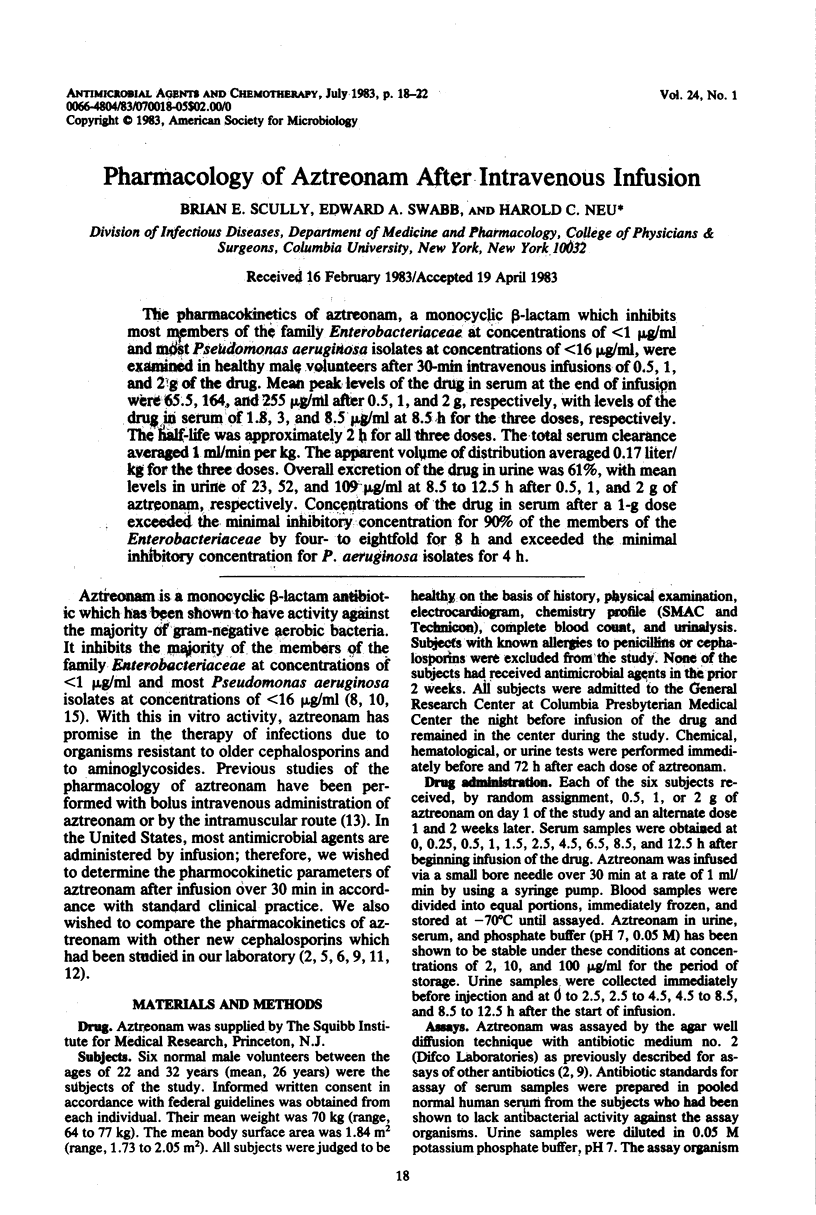
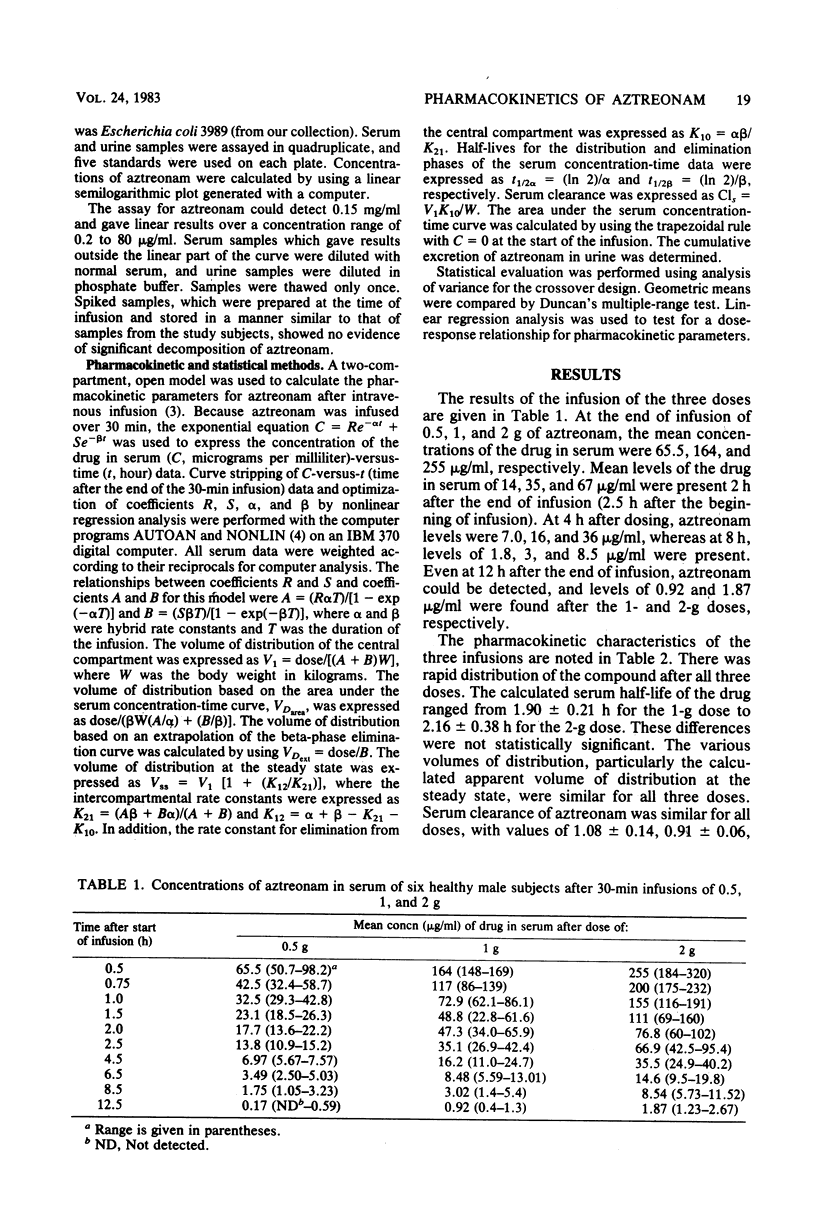
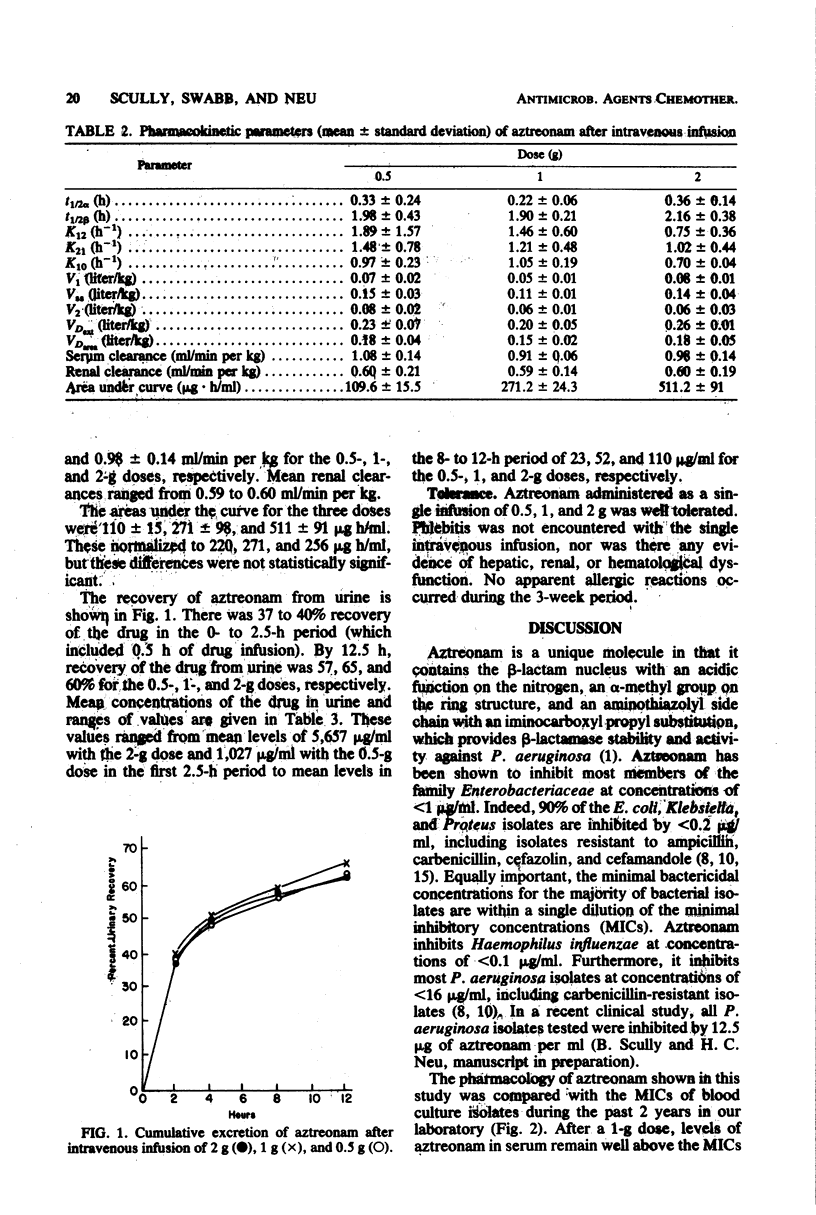
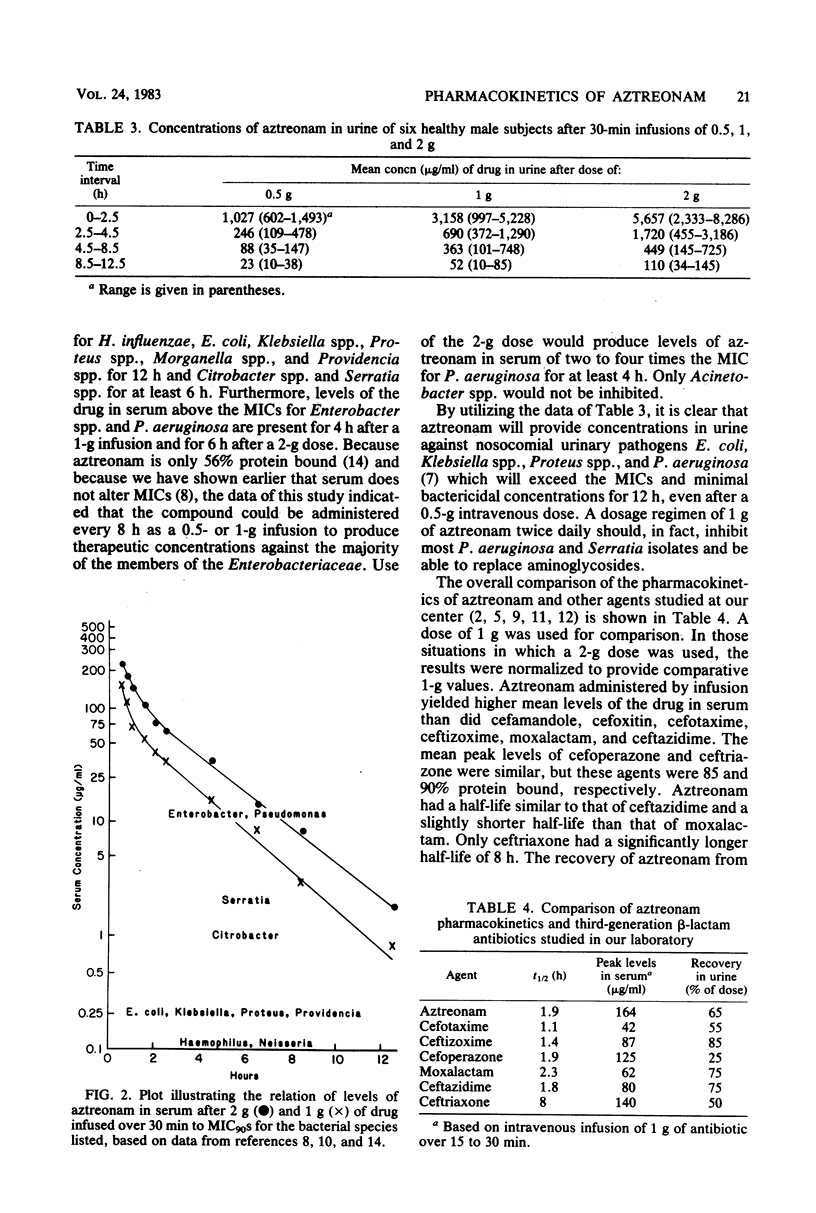
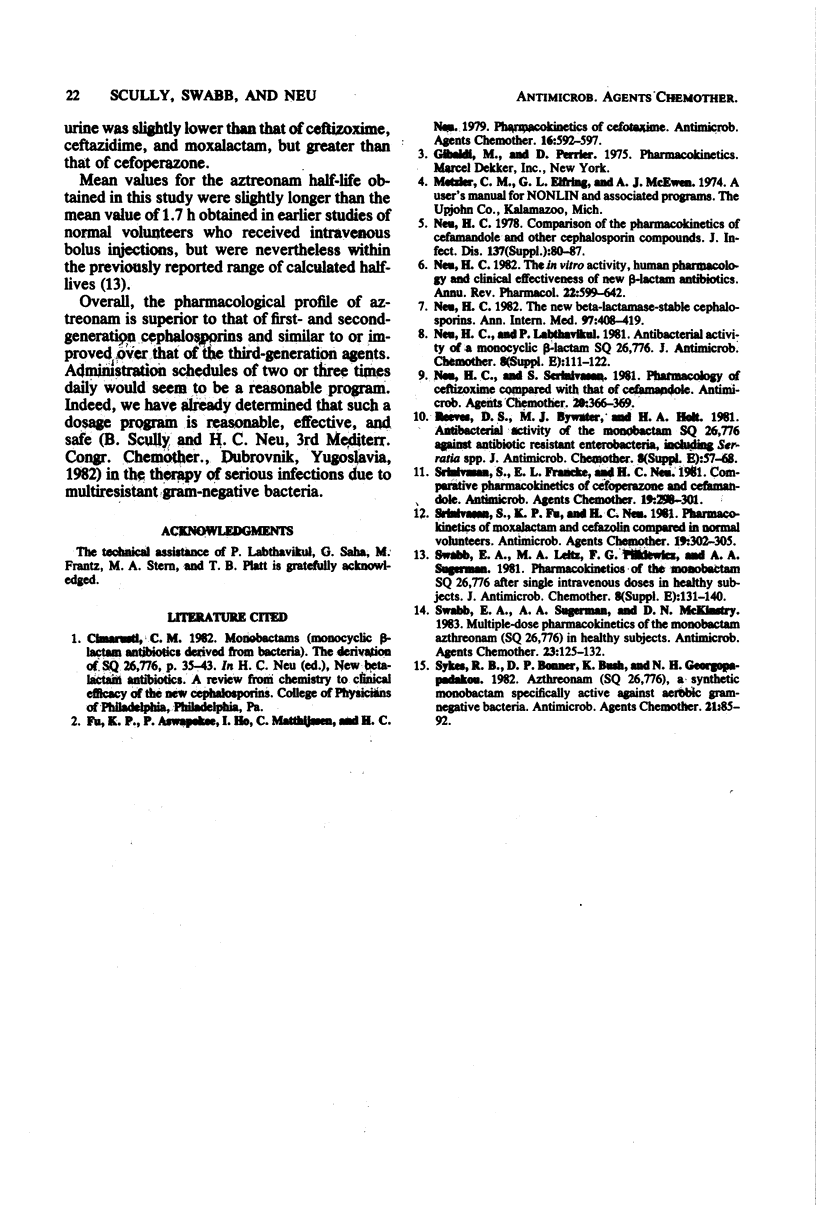
Selected References
These references are in PubMed. This may not be the complete list of references from this article.
- Sykes R. B., Bonner D. P., Bush K., Georgopapadakou N. H. Azthreonam (SQ 26,776), a synthetic monobactam specifically active against aerobic gram-negative bacteria. Antimicrob Agents Chemother. 1982 Jan;21(1):85–92. doi: 10.1128/aac.21.1.85. [DOI] [PMC free article] [PubMed] [Google Scholar]


